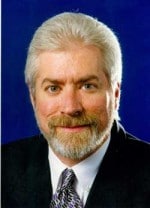
By: Bill Jacobs

Bill Jacobs
Chew on these five headlines about McDonald’s from the past seven months:
McDonald’s sales plunge. CEO calls results ‘disappointing.’ CNN Money, July 23, 2015
McDonald’s makes major menu change: All-day breakfast is here! NBC News, September 2, 2015
McDonald’s hails ‘successful’ all-day breakfast launch – Fortune, October 14, 2015
McDonald’s growth surges after all-day breakfast boosts sales – Bloomberg, January 25, 2016
This is what happens when McDonald’s listens to its customers – Washington Post, January 25, 2016
In an extremely short period of time, McDonald’s turned around plunging sales and a disappointing outlook, and created a surge in revenue and a stock price that’s increased 20 percent since last summer.
The key to their recent success can be found in that last headline because the once fast food category killer, McDonald’s, actually listened to its customers. In the process, they ended up doing what they said they’d never do: make their breakfast menu available all day.
This helped increase same-store sales by nearly six percent in the last three months of 2015, handily beating analyst forecasts. In fact, that “hefty jump” is the largest McDonald’s has pulled off in almost four years.
How did they do it? McDonald’s has known for years that many of its customers clamored for the all-day breakfast menu, but they resisted. While they may have had good reasons to rationalize the breakfast menu cutoff, McDonald’s merely watched as other fast food and fast casual restaurants passed them by. It’s not known how much McDonald’s spends on market research each year but they spent $988 million on advertising in 2013 which tells you something.
Contrast that to what many radio stations face, especially those in medium and smaller markets – scant marketing and little to no research. In other words, the vast majority of U.S. radio stations are flying blind.
If the request line was ever a legitimate feedback tool, it’s not in 2015. Our findings in Techsurvey11 show that fewer than four percent call a radio station request line frequently. In fact, more than half say they never pick up the phone to call their most-listened to station.
Not that many years ago, music and perceptual research were being conducted at many medium and small market stations. But today, those days are largely over, making it more difficult to know how to position and program your station effectively.
Yet, programmers aren’t powerless when it comes to gathering audience information that can be extremely useful. It requires looking for opportunities to learn about the product, the music, the airstaff, and promotional and marketing activities.
Below are resources that just about any station has that are somewhere between cost effective, dirt cheap, or even free. And in the process, PDs can learn a great deal about what the audience truly wants:
Listener Advisory Boards – The periodic gathering of a group of listeners selected from the station’s email database remains a key element in getting a handle on the mood of the audience, as well as what’s working and cutting through – and what’s not. The beauty of LABs is the breadth of topics that can be discussed – music, promotions, jocks, marketing, features, morning show content, as well as social and digital activity. Additionally, respondents can be exposed to audio and video, as well as marketing materials (billboard mockups, direct mail concepts, etc.). It’s smart to pay participants for showing up, along with pizza and soda.
Online Surveys – Like LABs, Online Surveys may have a bias because they’re populated by people already in your database. But you can use social media or even purchase an email list to broaden the sample. While you may question the ongoing value of a Two Fer Tuesday feature you’ve been running since the mid-‘80s, an Online Survey may tell you a majority of your listeners, in fact, still love it, giving you actual quantitative data in which to make informed decisions.
Social Statistics – The tools are available to determine the effectiveness of every post your station makes. Learn what types are the most likely to be shared or re-tweeted and start focusing these posts in this direction.
Online Music Tests – These do cost money but are a fraction of the cost of traditional music tests. These can be great low-cost options to get feedback on the songs you’re playing – or the ones you aren’t.
More targeted emails – Our Tech Surveys tell us email is still a key conduit in connecting with audiences. You’ve got the ability to learn more about who is in your email database, a tool that can be used for programming and sales. It’s a matter of taking the time to mine for more data on topics like future car purchases, hobbies, favorite bands, frequent restaurant choices, etc. that can then lead to more targeted emails and more material for the sales department.
Feedback at remotes/concerts – Most stations are in front of listeners on a consistent basis, whether it’s a couple dozen at a Jiffy Lube remote on a Saturday afternoon, or a concert with thousands of people on a Saturday night. Taking the time to talk to these fans can provide valuable feedback. Creating short surveys that can be filled out on the spot (bring a tablet) with the incentive of a free oil change or upgrade to better seats can improve your response rate.
Your staff – They’re on the ground, interfacing with listeners in person, on the phones, and in social media. So book a quarterly get-together at an area restaurant (maybe even a McDonald’s) to talk about the station and what they’re hearing, as well as what seems to be working and what isn’t.
None of these methods is as accurate as a well-screened music test or a statistically valid perceptual study, but they can provide much-needed feedback.
McDonald’s reminds us of the value of listening to customers, even if it’s a message they didn’t want to hear. There are probably many Golden Arches execs who wish they’d have done this years ago before sales were in decline.
By listening to your listeners, you can avoid a McDonald’s crisis. Waiting until you suffer a three book slide before deciding “We have to do something” is not a plan for success. Great stations use available resources, especially research tools that can unlock audience perceptions and opinions.
And you might want to cruise by your area McDonald’s to experience breakfast at dinner time as millions have.
It’s about listening to customers.
For more than 25 years, Bill Jacobs has become one of Rock radio’s most respected radio programming professionals. He emerged from Michigan State University with a Master’s degree in Telecommunications, and then became a Research Analyst for the USA Television Network. He later joined Eastman Radio in a similar capacity. Bill was lured back to radio and joined Jacobs Media as a consultant in 1987. Since then, he has designed the programming for countless radio stations, has contributed to the company’s most impactful radio promotions, and most importantly, has become an expert in the specific needs and challenges facing small and medium market radio stations.


